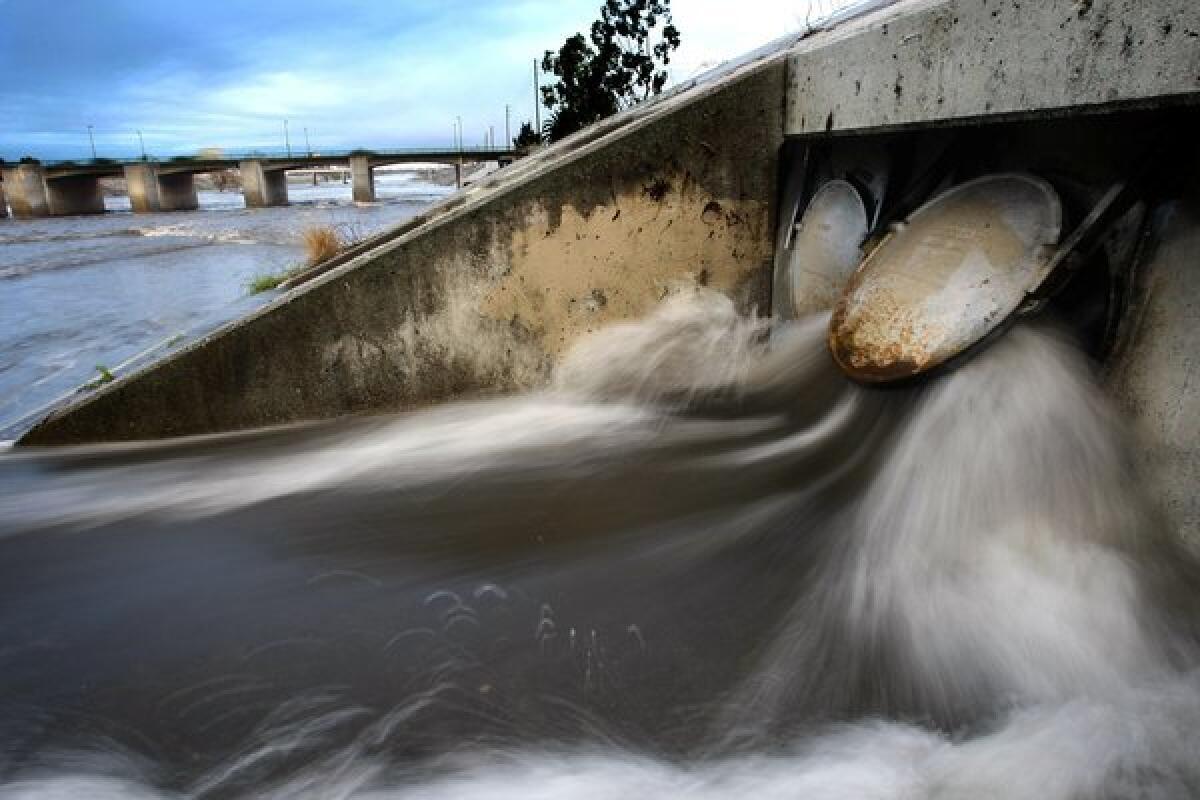Appeals court deals setback to L.A. County in storm-water case

- Share via
The U.S. 9th Circuit Court of Appeals dealt a setback to Los Angeles County on Thursday in a long-running lawsuit over storm-water pollution.
The Natural Resources Defense Council and Santa Monica Baykeeper -- now Los Angeles Waterkeeper -- sued the county flood control district in 2008 over pollution in the Los Angeles and San Gabriel rivers, alleging that the flood control district had violated its storm water permit.
The lawsuit cited high pollution readings at monitoring stations in the rivers.
County officials have argued that the flood control district is not primarily to blame for the pollution in the rivers, because there are dozens of cities discharging polluted runoff upstream from the monitoring sites.
Last year, the 9th Circuit ruled that the county was liable for pollution in the rivers, and referred to the water flowing from the “concrete channels” into the natural part of the lower river as discharges of pollutants.
The U.S. Supreme Court in January reversed that opinion, saying that water flowing from one “concrete” section of the river to another section cannot be deemed a “discharge” of pollutants. It did not rule on a number of other issues raised in the case.
The 9th Circuit issued an opinion Thursday saying that the county is still liable for excessively high pollution levels detected at monitoring stations in county waterways.
The panel found that accepting the county’s interpretation of the permit requirements would lead to “an unreasonable result.”
“Under the County Defendants’ reading of the Permit, individual Permittees could discharge an unlimited amount of pollutants ... but never be held liable for those discharges based on the results of the emissions monitoring, even though that monitoring is explicitly intended to assess whether Permittees are in compliance” with discharge limitations, the opinion said.
Unless the county appeals, the case will go back to the federal district court to determine how the county will be required to fix the violations.
Kerjon Lee, a spokesman for the flood control district, said county officials are still reviewing the decision.
Steve Fleischli, senior attorney and director of NRDC’s national water program, called the decision “a significant milestone.”
“I think this case demonstrates that there is accountability built into the system, and if the county avoids that, they will be held liable,” he said.
ALSO:
9 Powerball tickets in California come oh-so-close to jackpot
Amber Alert: Relationship between missing girl, suspect unclear
Man suspected of killing mom’s boyfriend, hiding body in freezer
Twitter: @sewella
More to Read
Sign up for Essential California
The most important California stories and recommendations in your inbox every morning.
You may occasionally receive promotional content from the Los Angeles Times.











